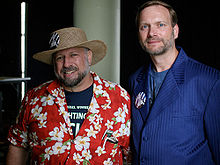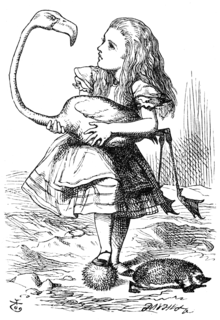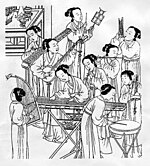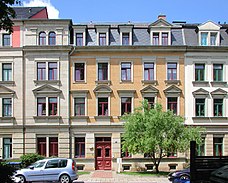- Project Gutenberg Australia hosts many texts that are public domain according to Australian copyright law, but still under copyright (or of uncertain status) in the United States, with a focus on Australian writers and books about Australia.
- Project Gutenberg Canada.
- Project Gutenberg Consortia Center specializes in collections of collections. These do not have the editorial oversight or consistent formatting of the main Project Gutenberg. Thematic collections, as well as numerous languages, are featured.
- Projekt Gutenberg-DE claims copyright for its product and limits access to browsable web-versions of its texts.
- Project Gutenberg Europe is run by Project Rastko in Serbia. It aims at being a Project Gutenberg for all of Europe, and began posting projects in 2005. It uses the Distributed Proofreaders software to quickly produce etexts.
- Project Gutenberg Luxembourg publishes mostly, but not exclusively, books that are written in Luxembourgish.
- Projekti Lönnrot, started by Finnish Project Gutenberg volunteers, derives its name from the Finnish philologist Elias Lönnrot (1802–1884)
- Project Gutenberg of the Philippines aims to "make as many books available to as many people as possible, with a special focus on the Philippines and Philippine languages".
- Project Gutenberg Russia (Rutenberg) aims to collect public domain books in Slavic languages, particularly in Russian. The discussion of the project and its legal side began in April 2012. The word Rutenberg is a combination of words "Russia" and "Gutenberg".
- Project Gutenberg Self-Publishing Press, also known as Project Gutenberg Consortia Center. Unlike the Gutenberg Project itself, Project Gutenberg Self-Publishing allows submission of texts never published before, including self-published ebooks. Launched in 2012, also owns the "gutenberg.us" domain.
- Project Gutenberg of Taiwan seeks to archive copyright free books with a special focus on Taiwan in English, Mandarin and Taiwan-based languages. It is a special project of Forumosa.com
 | |
| Established | December 1971 (first document posted) |
|---|---|
| Collection | |
| Size | Over 60,000 documents |
| Website | gutenberg |
Project Gutenberg (PG) is a volunteer effort to digitize and archive cultural works, as well as to "encourage the creation and distribution of eBooks." It was founded in 1971 by American writer Michael S. Hart and is the oldest digital library. Most of the items in its collection are the full texts of books in the public domain. All files can be accessed for free under an open format layout, available on almost any computer. As of 22 May 2021, Project Gutenberg had reached 65,405 items in its collection of free eBooks.
The releases are available in plain text as well a other formats, such as HTML, PDF, EPUB, MOBI, and Plucker wherever possible. Most releases are in the English language, but many non-English works are also available. There are multiple affiliated projects that provide additional content, including region- and language-specific works. Project Gutenberg is closely affiliated with Distributed Proofreaders, an Internet-based community for proofreading scanned texts.
History
Michael S. Hart began Project Gutenberg in 1971 with the digitization of the United States Declaration of Independence. Hart, a student at the University of Illinois, obtained access to a Xerox Sigma V mainframe computer in the university's Materials Research Lab. Through friendly operators, he received an account with a virtually unlimited amount of computer time; its value at that time has since been variously estimated at $100,000 or $100,000,000. Hart explained he wanted to "give back" this gift by doing something one could consider to be of great value. His initial goal was to make the 10,000 most consulted books available to the public at little or no charge by the end of the 20th century.
This particular computer was one of the 15 nodes on ARPANET, the computer network that would become the Internet. Hart believed one day the general public would be able to access computers and decided to make works of literature available in electronic form for free. He used a copy of the United States Declaration of Independence in his backpack, and this became the first Project Gutenberg e-text. He named the project for Johannes Gutenberg, the fifteenth century German printer who propelled the movable type printing press revolution.
By the mid-1990s, Hart was running Project Gutenberg from Illinois Benedictine College. More volunteers had joined the effort. He manually entered all of the text until 1989 when image scanners and optical character recognition software improved and became more available, making book scanning more feasible. Hart later came to an arrangement with Carnegie Mellon University, which agreed to administer Project Gutenberg's finances. As the volume of e-texts increased, volunteers began to take over the project's day-to-day operations that Hart had run.
Starting in 2004, an improved online catalog made Project Gutenberg content easier to browse, access and hyperlink. Project Gutenberg is now hosted by ibiblio at the University of North Carolina at Chapel Hill.
Italian volunteer Pietro Di Miceli developed and administered the first Project Gutenberg website and started the development of the Project online Catalog. In his ten years in this role (1994–2004), the Project web pages won a number of awards, often being featured in "best of the Web" listings, and contributing to the project's popularity.
Hart died on 6 September 2011 at his home in Urbana, Illinois, at the age of 64.
Affiliated organizations
In 2000, a non-profit corporation, the Project Gutenberg Literary Archive Foundation, Inc. was chartered in Mississippi, United States, to handle the project's legal needs. Donations to it are tax-deductible. Long-time Project Gutenberg volunteer Gregory Newby became the foundation's first CEO.
Also in 2000, Charles Franks founded Distributed Proofreaders (DP), which allowed the proofreading of scanned texts to be distributed among many volunteers over the Internet. This effort increased the number and variety of texts being added to Project Gutenberg, as well as making it easier for new volunteers to start contributing. DP became officially affiliated with Project Gutenberg in 2002. As of 2018, the 36,000+ DP-contributed books comprised almost two-thirds of the nearly 60,000 books in Project Gutenberg.
CD and DVD project
In August 2003, Project Gutenberg created a CD containing approximately 600 of the "best" e-books from the collection. The CD is available for download as an ISO image. When users are unable to download the CD, they can request to have a copy sent to them, free of charge.
In December 2003, a DVD was created containing nearly 10,000 items. At the time, this represented almost the entire collection. In early 2004, the DVD also became available by mail.
In July 2007, a new edition of the DVD was released containing over 17,000 books, and in April 2010, a dual-layer DVD was released, containing nearly 30,000 items.
The majority of the DVDs, and all of the CDs mailed by the project, were recorded on recordable media by volunteers. However, the new dual layer DVDs were manufactured, as it proved more economical than having volunteers burn them. As of October 2010, the project has mailed approximately 40,000 discs. As of 2017, the delivery of free CDs has been discontinued, though the ISO image is still available for download.
Scope of collection
As of August 2015, Project Gutenberg claimed over 60,000 items in its collection, with an average of over 50 new e-books being added each week. These are primarily works of literature from the Western cultural tradition. In addition to literature such as novels, poetry, short stories and drama, Project Gutenberg also has cookbooks, reference works and issues of periodicals. The Project Gutenberg collection also has a few non-text items such as audio files and music-notation files.
Most releases are in English, but there are also significant numbers in many other languages. As of April 2016, the non-English languages most represented are: French, German, Finnish, Dutch, Italian, and Portuguese.
Whenever possible, Gutenberg releases are available in plain text, mainly using US-ASCII character encoding but frequently extended to ISO-8859-1 (needed to represent accented characters in French and Scharfes s in German, for example). Besides being copyright-free, the requirement for a Latin (character set) text version of the release has been a criterion of Michael Hart's since the founding of Project Gutenberg, as he believes this is the format most likely to be readable in the extended future. Out of necessity, this criterion has had to be extended further for the sizable collection of texts in East Asian languages such as Chinese and Japanese now in the collection, where UTF-8 is used instead.
Other formats may be released as well when submitted by volunteers. The most common non-ASCII format is HTML, which allows markup and illustrations to be included. Some project members and users have requested more advanced formats, believing them to be easier to read. But some formats that are not easily editable, such as PDF, are generally not considered to fit with the goals of Project Gutenberg. Also Project Gutenberg has two options for master formats that can be submitted (from which all other files are generated): customized versions of the Text Encoding Initiative standard (since 2005) and reStructuredText (since 2011).
Beginning in 2009, the Project Gutenberg catalog began offering auto-generated alternate file formats, including HTML (when not already provided), EPUB and plucker.
Ideals
Michael Hart said in 2004, "The mission of Project Gutenberg is simple: 'To encourage the creation and distribution of ebooks'". His goal was "to provide as many e-books in as many formats as possible for the entire world to read in as many languages as possible". Likewise, a project slogan is to "break down the bars of ignorance and illiteracy", because its volunteers aim to continue spreading public literacy and appreciation for the literary heritage just as public libraries began to do in the late 19th century.
Project Gutenberg is intentionally decentralized; there is no selection policy dictating what texts to add. Instead, individual volunteers work on what they are interested in, or have available. The Project Gutenberg collection is intended to preserve items for the long term, so they cannot be lost by any one localized accident. In an effort to ensure this, the entire collection is backed-up regularly and mirrored on servers in many different locations.
Copyright
Project Gutenberg is careful to verify the status of its ebooks according to United States copyright law. Material is added to the Project Gutenberg archive only after it has received a copyright clearance, and records of these clearances are saved for future reference. Project Gutenberg does not claim new copyright on titles it publishes. Instead, it encourages their free reproduction and distribution.
Most books in the Project Gutenberg collection are distributed as public domain under United States copyright law. There are also a few copyrighted texts, such as those of science fiction author Cory Doctorow, that Project Gutenberg distributes with permission. These are subject to further restrictions as specified by the copyright holder, although they generally tend to be licensed under Creative Commons.
"Project Gutenberg" is a trademark of the organization, and the mark cannot be used in commercial or modified redistributions of public domain texts from the project. There is no legal impediment to the reselling of works in the public domain if all references to Project Gutenberg are removed, but Gutenberg contributors have questioned the appropriateness of directly and commercially reusing content that has been formatted by volunteers. There have been instances of books being stripped of attribution to the project and sold for profit in the Kindle Store and other booksellers, one being the 1906 book Fox Trapping.
The website is not accessible within Germany, as a result of a court order from S. Fischer Verlag regarding the works of Heinrich Mann, Thomas Mann and Alfred Döblin. Although they were in the public domain in the United States, the German court (Frankfurt am Main Regional Court) recognized the infringement of copyrights still active in Germany, and asserted that the Project Gutenberg website was under German jurisdiction because it hosts content in the German language and is accessible in Germany. This judgment was confirmed by the Frankfurt Court of Appeal on 30 April 2019. The Frankfurt Court of Appeal has not given permission for a further appeal to the Federal Court of Justice (Bundesgerichtshof), however, an application for permission to appeal has been filed with the Federal Court of Justice. As of 4 October 2020 that application was still pending (Federal Court of Justice I ZR 97/19).
The website is also not accessible within Italy since May 2020.
Criticism
The text files use the format of plain text encoded in UTF-8 and are typically wrapped at 65–70 characters, with paragraphs separated by a double line break. In recent decades, the resulting relatively bland appearance and the lack of a markup possibility have often been perceived as a drawback of this format. Project Gutenberg attempts to address this by making many texts available in HTML, ePub, and PDF versions as well. HTML versions of older texts are autogenerated versions. Another not-for-profit project, Standard Ebooks, aims to address these issues with its collection of public domain titles that are formatted and styled. It corrects issues related to design and typography.
In December 1994, Project Gutenberg was criticized by the Text Encoding Initiative for failing to include documentation or discussion of the decisions unavoidable in preparing a text, or in some cases, not documenting which of several (conflicting) versions of a text has been the one digitized.
The selection of works (and editions) available has been determined by popularity, ease of scanning, being out of copyright, and other factors; this would be difficult to avoid in any crowd-sourced project.
In March 2004, an initiative was begun by Michael Hart and John S. Guagliardo to provide low-cost intellectual properties. The initial name for this project was Project Gutenberg 2 (PG II), which created controversy among PG volunteers because of the re-use of the project's trademarked name for a commercial venture.
Affiliated projects
All affiliated projects are independent organizations that share the same ideals and have been given permission to use the Project Gutenberg trademark. They often have a particular national or linguistic focus.
List of affiliated projects



















